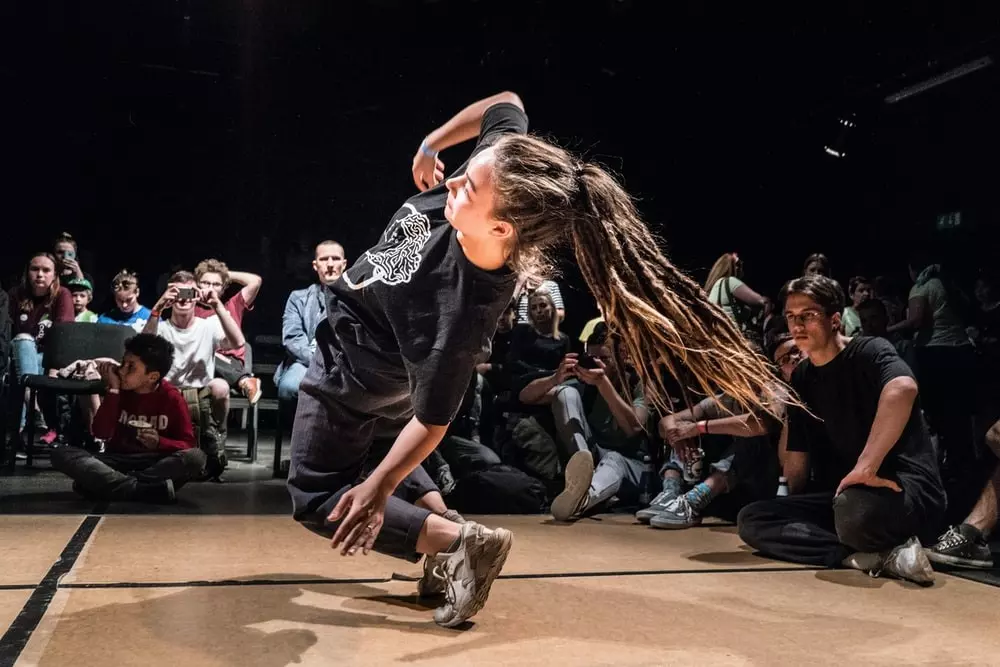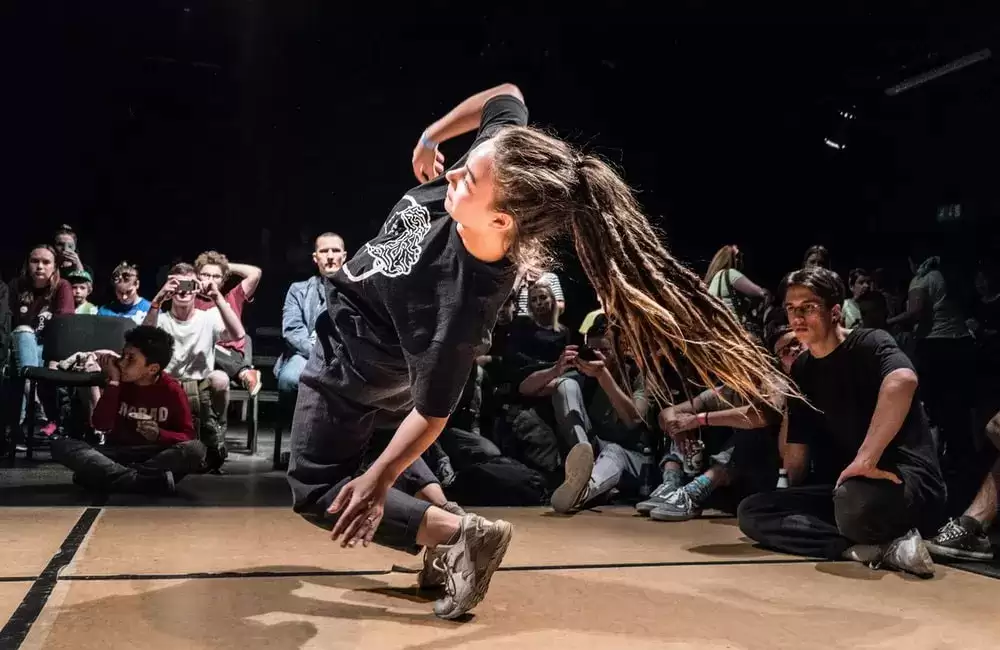Breakdancing, also known as breaking, has captivated audiences worldwide with its blend of athleticism, creativity, and rhythm. As breakdancers prepare to compete in the 2024 Olympics, it’s crucial to recognize that they require expert, specialized care akin to other athletes. This blog post delves into the common injuries faced by breakdancers and offers advice on improving movement, fitness, and overall health, drawing insights from top orthopedic experts and seasoned dancers.

The Rise of Breakdancing
Breakdancing originated in the South Bronx in the late 1960s and early 1970s, a time of social and economic challenges. Young people turned to this art form as a means of expression and community building. By the 1980s, breakdancing had become commercialized and entered mainstream culture, thanks in part to movies, music videos, and television shows. By 2010, independent breakdancing competitions were held globally, and after its successful introduction at the 2018 Youth Olympics in Buenos Aires, breakdancing was approved as a sport for the 2024 Olympics in Paris.
Breakdancers as Athletes
With the rise of shows like “So You Think You Can Dance,” various dance forms have surged in popularity. Breakdancers, like other dancers, exhibit remarkable flexibility, technique, and precision. Their ability to captivate and inspire audiences is extraordinary, but behind the seemingly effortless choreography are years of rigorous training. Breakdancers push their bodies to the limit, balancing strength, power, flexibility, and grace.
Common Injuries in Breakdancing
The physical demands of breakdancing are immense, and the severity of injuries incurred can be similar to those faced by gymnasts. The most common injuries include:
Sprains and Strains
These are frequent due to the intense physical exertion and sudden movements inherent in breakdancing. Ankles, knees, and wrists are particularly susceptible.
Tendinitis and Bursitis
Overuse of muscles and joints can lead to inflammation, commonly affecting the shoulders, elbows, and wrists.
Growth Plate Injuries
Younger dancers are at risk of growth plate injuries due to the repetitive stress placed on developing bones.
Fractures
High-impact moves can cause fractures in various bones, including the clavicle, radius, ulna, femur, calcaneus, and vertebra.
Spinal Cord Injuries
Complex power moves and freezes place significant stress on the spine, leading to potential spinal cord injuries.
Wrist Injuries
Wrist injuries are particularly common due to moves like flares and windmills that put immense pressure on the wrists.
Prevention and Treatment of Injuries
To minimize the risk of injuries, breakdancers should adopt the following practices:
Proper Warm-Up
A thorough warm-up routine increases blood flow to muscles and prepares the body for intense activity. Dynamic stretching and light cardio exercises are essential components of a good warm-up.
Strength Training
Building muscle strength, especially in the core and upper body, is crucial for performing power moves safely. Strength training exercises such as push-ups, pull-ups, and weightlifting help in developing the necessary muscle mass and endurance.
Flexibility Exercises
Regular stretching enhances flexibility and reduces the risk of strains. Yoga and Pilates are popular complementary practices that improve flexibility, balance, and core strength.
Technique Training
Learning proper techniques for executing moves can prevent unnecessary strain on the body. Dancers should focus on mastering the basics before attempting more complex moves.
Rest and Recovery
Allowing adequate time for recovery between training sessions helps prevent overuse injuries. Proper rest, sleep, and hydration are vital for muscle recovery and overall health.
Insights from a Seasoned Dancer
Anthony Rue II, also known as AntBoogie, is a renowned hip-hop/street dancer and founder of Urban Dance League (UDL). He has danced consistently since the age of nine and incorporates breaking into his choreography and freestyles. UDL places dancers on the same platform as athletes, with organized dance classes, performances, and competitions that earn points and sponsorships.
Anthony’s extensive training began at the National Dance Institute in Brooklyn, New York, and continued at Fiorello H. LaGuardia High School for Music and the Performing Arts. He combined his classical training with his gift for choreography, forming the AmountBoyz with a few friends. Anthony’s talent quickly gained recognition, leading to collaborations with Madonna, Jay-Z, Diddy, Omarion, Alicia Keys, Mario, 3LW, and Ryan Leslie.
Managing Injuries
Throughout his career, Anthony has faced several injuries, including a severe hamstring strain and chronic hip pain. He continues to dance and perform by adhering to a disciplined routine that includes regular stretching, thorough warm-ups, and staying informed about health and injury management. Anthony recently attended the HSS Day of Dance Wellness, which offered health screenings and educational lectures for dancers.
Dancers as Athletes
Anthony emphasizes that “dancers are athletes.” As the popularity and interest in breakdancing increase, it’s vital to understand the injuries associated with it, along with prevention and treatment strategies. This understanding ensures that breakdancers can continue to captivate audiences while maintaining their health and well-being.
The Importance of Specialized Care
Breakdancers require specialized care similar to other athletes. Orthopedic experts can provide valuable advice on improving movement, fitness, and overall health. Regular check-ups, physical therapy, and professional guidance are crucial for maintaining peak performance and preventing injuries.
Physical Therapy and Rehabilitation
Physical therapy plays a significant role in the recovery process for injured breakdancers. Therapists can design personalized rehabilitation programs that address specific injuries and help dancers regain strength, flexibility, and functionality.
Nutrition and Hydration
Proper nutrition and hydration are essential for optimal performance and recovery. Dancers should consume a balanced diet rich in proteins, carbohydrates, fats, vitamins, and minerals. Staying hydrated helps maintain energy levels and supports muscle recovery.
Mental Health and Well-Being
The mental demands of breakdancing are as significant as the physical ones. Stress, anxiety, and performance pressure can take a toll on dancers. Mental health support, mindfulness practices, and relaxation techniques are crucial for maintaining mental well-being.
Conclusion
Breakdancing is an exhilarating and physically demanding dance form that requires the same level of care and attention as any other athletic discipline. As breakdancers prepare for their Olympic debut, understanding the common injuries they face and implementing strategies for prevention and treatment are vital.
By embracing proper warm-up routines, strength training, flexibility exercises, and technique training, breakdancers can minimize the risk of injuries. Insights from seasoned dancers like Anthony Rue II highlight the importance of treating dancers as athletes and ensuring they have access to specialized care.
As the popularity of breakdancing continues to rise, so does the need for an in-depth understanding of the art form and the injuries associated with it. With the right knowledge and support, breakdancers can continue to push the boundaries of their craft, captivating audiences worldwide with their gravity-defying moves.
Breakdancing is not just a dance style; it’s a cultural movement that inspires creativity, resilience, and community. By recognizing the athleticism and dedication required, we can better appreciate the incredible talent and effort behind every performance.


Leave a reply